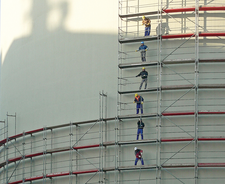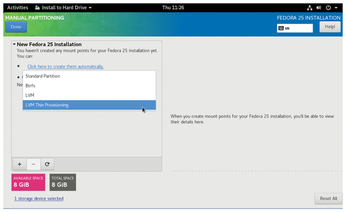Installer framework Calamares at a glance
Modular Kit

© Lead Image © ChriSes, photocase
Calamares helps you create simplified routines for installing a distribution, but there are some pitfalls, as we explain.
Installing Linux today is quite straightforward compared to, say, 15 years ago when the process could be quite time-consuming. That said, installers still confront newcomers with issues such as partitioning, which is similar to open heart surgery and can easily go wrong. Installing Arch Linux is the exception in this case, because there is no official installer for the system. But, if you look at Debian, Fedora (Figure 1), or openSUSE, their setups offer an abundance of possibilities, even including LVM/RAID on encrypted systems.

This diversity can easily be confusing for beginners. Additionally, these users may be accustomed from Windows or Mac OS X to always having the same installer, which you get to know better over time. Users who often switch distros on Linux, however, are repeatedly confronted with different interfaces.
[...]
Buy Linux Magazine
Subscribe to our Linux Newsletters
Find Linux and Open Source Jobs
Subscribe to our ADMIN Newsletters
Support Our Work
Linux Magazine content is made possible with support from readers like you. Please consider contributing when you’ve found an article to be beneficial.

News
-
Parrot OS Switches to KDE Plasma Desktop
Yet another distro is making the move to the KDE Plasma desktop.
-
TUXEDO Announces Gemini 17
TUXEDO Computers has released the fourth generation of its Gemini laptop with plenty of updates.
-
Two New Distros Adopt Enlightenment
MX Moksha and AV Linux 25 join ranks with Bodhi Linux and embrace the Enlightenment desktop.
-
Solus Linux 4.8 Removes Python 2
Solus Linux 4.8 has been released with the latest Linux kernel, updated desktops, and a key removal.
-
Zorin OS 18 Hits over a Million Downloads
If you doubt Linux isn't gaining popularity, you only have to look at Zorin OS's download numbers.
-
TUXEDO Computers Scraps Snapdragon X1E-Based Laptop
Due to issues with a Snapdragon CPU, TUXEDO Computers has cancelled its plans to release a laptop based on this elite hardware.
-
Debian Unleashes Debian Libre Live
Debian Libre Live keeps your machine free of proprietary software.
-
Valve Announces Pending Release of Steam Machine
Shout it to the heavens: Steam Machine, powered by Linux, is set to arrive in 2026.
-
Happy Birthday, ADMIN Magazine!
ADMIN is celebrating its 15th anniversary with issue #90.
-
Another Linux Malware Discovered
Russian hackers use Hyper-V to hide malware within Linux virtual machines.

